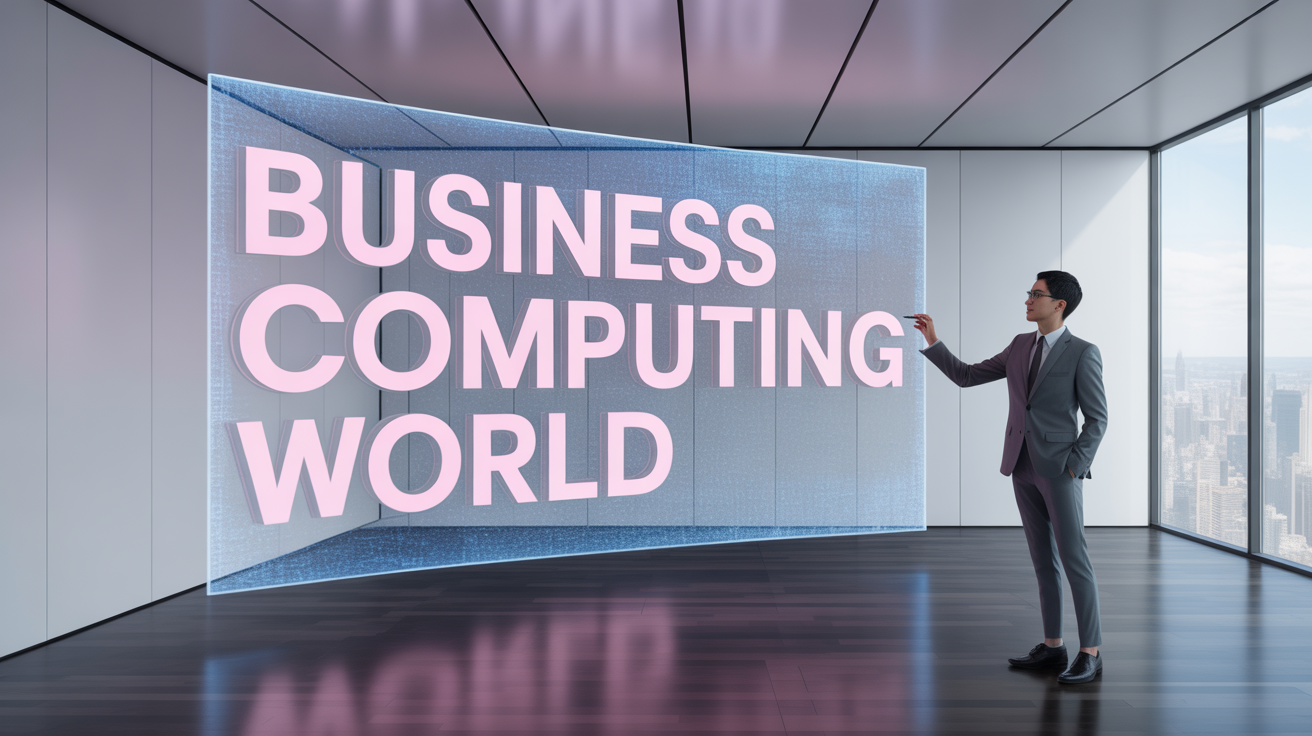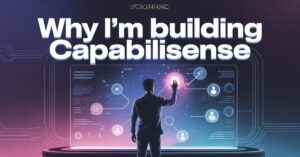The business computing world has transformed dramatically over the past decade.
What once required massive server rooms and dedicated IT staff now fits into cloud-based solutions accessible from anywhere.
Yet this evolution brings complexity that demands attention from every professional not just tech specialists.
Understanding business computing trends 2025 isn’t optional anymore. It’s a survival skill.
Companies that grasp these concepts thrive. Those that ignore them struggle to compete.
What Business Computing World Really Means
Business Computing World represents more than just another tech publication or industry buzzword.
It’s the entire ecosystem where information technology intersects with commercial operations.
This convergence creates the digital backbone supporting modern enterprises.
Think of it as the nervous system of contemporary business. Every transaction, every customer interaction, every strategic decision flows through this infrastructure.
Digital transformation isn’t coming it arrived years ago. Now we’re navigating its mature phase.
The concept encompasses several critical areas:
- IT infrastructure that keeps operations running smoothly
- Software applications that automate repetitive tasks
- Data management systems that turn raw information into actionable insights
- Emerging technologies that reshape competitive landscapes
What separates business computing from consumer tech? Scale and consequence.
When your phone crashes, you restart it. When enterprise systems fail, companies lose millions per hour. That difference demands specialized knowledge.
Core Pillars: What Actually Matters in Business Computing
Cybersecurity: Your First Line of Defense
Cybersecurity dominates conversations in boardrooms worldwide and for good reason.
The average data breach now costs companies $4.45 million according to IBM’s latest research. Ransomware attacks hit businesses every 11 seconds in 2024.
Cybersecurity best practices have evolved beyond simple firewalls and antivirus software. Modern threat detection requires layered approaches:
Multi-factor authentication (MFA) has become mandatory rather than optional.
This single change prevents 99.9% of automated attacks targeting user accounts. Yet adoption remains frustratingly inconsistent across industries.
Data encryption protects information both in transit and at rest. Organizations following frameworks like NIST cybersecurity framework and ISO 27001 compliance demonstrate commitment to security that customers notice and value.
The regulatory landscape adds complexity. GDPR and CCPA compliance aren’t just legal checkboxes they’re trust-building exercises.
Companies handling European or California resident data must implement specific safeguards or face penalties reaching 4% of global revenue.
| Security Framework | Focus Area | Best For |
|---|---|---|
| NIST Cybersecurity Framework | Comprehensive risk management | Large enterprises |
| ISO 27001 | Information security management | Organizations seeking certification |
| GDPR | Data privacy for EU residents | Companies with European customers |
| CCPA | California consumer privacy | Businesses serving California market |
Cloud Computing: The Infrastructure Revolution
Cloud computing fundamentally changed how businesses operate. Instead of purchasing and maintaining physical servers, organizations rent computing power as needed.
This shift represents more than cost savings it enables entirely new business models.
The three primary cloud service models serve different needs:
IaaS (Infrastructure as a Service) provides raw computing resources. Companies like AWS (Amazon Web Services), Microsoft Azure, and Google Cloud lead this space.
You get virtual machines and storage without managing physical hardware.
PaaS (Platform as a Service) adds development tools and databases.
Developers build applications without worrying about underlying infrastructure maintenance. This accelerates product launches dramatically.
SaaS (Software as a Service) delivers complete applications through web browsers.
Salesforce, Microsoft 365, and Slack exemplify this model. Users access sophisticated software without installation or updates.
Cloud scalability and flexibility mean businesses handle demand spikes effortlessly.
Black Friday traffic that would crash traditional systems? Cloud infrastructure scales automatically. Slow season with minimal activity? Costs decrease proportionally.
Secure cloud solutions address the biggest concern organizations have about migration.
Cloud computing providers now offer security exceeding what most companies achieve independently.
Their economies of scale fund security teams and technologies smaller organizations can’t afford.
Enterprise IT: The Operational Backbone
Enterprise IT encompasses the systems keeping large organizations functional.
ERP systems (Enterprise Resource Planning) integrate everything from accounting to inventory management into unified platforms.
These systems enable operational efficiency by eliminating data silos. When sales, manufacturing, and finance share real-time information, decisions improve dramatically.
Business optimization happens when processes flow smoothly across departments.
IT governance frameworks ensure technology investments align with business objectives.
Without governance, IT spending becomes reactive and fragmented. Strong governance links every technology initiative to measurable business outcomes.
IT audits and risk assessment identify vulnerabilities before they become crises.
Regular evaluations catch outdated software, misconfigured security settings, and compliance gaps. Prevention costs far less than remediation after breaches.
Data Protection: Safeguarding Your Most Valuable Asset
Data protection extends beyond cybersecurity into comprehensive information management.
Organizations generate unprecedented data volumes daily. Protecting this resource requires systematic approaches.
Data backup and recovery strategies assume breaches and disasters will occur. The question isn’t if but when.
Companies with robust backup solutions recover quickly. Those without face potential extinction.
The 3-2-1 backup rule remains gold standard: three copies of data, on two different media types, with one copy offsite. Cloud services simplify this approach while improving reliability.
Data encryption standards protect information even if attackers access storage systems.
Modern encryption makes stolen data mathematically impossible to read without proper keys. This transforms catastrophic breaches into manageable incidents.
Data privacy and trust directly impact customer relationships. Consumers increasingly choose companies demonstrating strong privacy commitments.
Transparency about data collection and usage builds loyalty that generic marketing can’t replicate.
Mobile Technology: Computing in Your Pocket
Mobile technology transformed from convenience to necessity. Employees expect accessing business systems from smartphones and tablets.
Customers demand mobile experiences matching desktop functionality.
Mobile-first business strategy prioritizes mobile design and functionality. With over 60% of web traffic originating from mobile devices, this approach simply reflects reality.
Websites and applications that work poorly on phones lose customers immediately.
BYOD (Bring Your Own Device) policies let employees use personal devices for work.
This increases satisfaction and reduces hardware costs. However, it introduces security challenges requiring mobile device management solutions.
These systems enforce security policies on employee devices without invading privacy.
They can wipe corporate data from lost phones while leaving personal information untouched.
Balancing security with employee autonomy defines successful BYOD implementation.
Mobile app engagement drives customer interaction in countless industries. Banks process more transactions through apps than branches.
Retailers personalize shopping experiences based on mobile behavior. Healthcare providers enable remote consultations via smartphone apps.
Web Development: Your Digital Storefront
Web development creates the interfaces connecting businesses with customers and employees.
Poor websites cost companies billions in lost opportunities. Excellent sites become competitive advantages.
Responsive web design ensures websites work across device sizes. A design that looks perfect on desktops but breaks on phones alienates mobile users.
Modern frameworks make responsive design standard practice rather than luxury feature.
UX and SEO optimization work together driving traffic and converting visitors. Beautiful designs mean nothing if search engines can’t find them.
Intuitive navigation keeps visitors engaged once they arrive.
Digital presence optimization extends beyond individual websites.
Businesses must consider how they appear across social media, review sites, and search results. Consistency across channels builds brand recognition and trust.
Performance directly impacts revenue. Amazon found that every 100ms of additional page load time decreased sales by 1%.
Google prioritizes fast-loading sites in search rankings. Speed isn’t technical detail it’s business imperative.
Strategic Value: Why This Knowledge Drives Business Success
Understanding the business computing world translates directly into competitive advantage.
Companies leveraging technology strategically outperform those treating IT as mere support function.
Data-driven decision making replaces gut feelings with empirical evidence. Analytics platforms process millions of data points identifying patterns humans couldn’t spot.
Retailers predict inventory needs. Manufacturers optimize production schedules. Financial firms detect fraud in real-time.
Automation in business processes eliminates repetitive tasks consuming human hours.
Employees freed from manual data entry focus on creative problem-solving and customer relationships. Automation tools don’t replace people they amplify human capabilities.
Technology alignment with business goals ensures IT investments generate measurable returns.
Every software purchase, every infrastructure upgrade should advance specific business objectives.
Strategic planning integrates technology decisions into broader organizational strategy.
Business innovation through IT creates entirely new revenue streams. Netflix transformed from DVD rentals to streaming through technology innovation.
Traditional retailers survived Amazon’s disruption by developing sophisticated e-commerce and logistics systems.
Who Needs Business Computing Knowledge?
Technology Leaders and IT Professionals
Technology leadership extends beyond CTOs and CIOs. Every IT manager must understand how their work impacts broader business objectives.
Technical excellence matters less than business outcomes.
IT management professionals coordinate complex projects involving multiple stakeholders and competing priorities.
Project management in IT requires balancing technical constraints with business requirements and budget limitations.
IT compliance and governance specialists ensure organizations meet regulatory requirements while maintaining operational flexibility.
This role grows increasingly important as regulations multiply and penalties escalate.
Business Executives and Decision Makers
CEOs and CFOs make technology decisions affecting entire organizations. Leadership in digital transformation requires understanding both technology capabilities and business implications.
Business technology integration succeeds when executives champion change.
Top-down support overcomes resistance from middle management and frontline employees. Without executive commitment, even brilliant technical solutions fail.
Entrepreneurs and Startup Founders
Founders building new ventures must make smart technology choices from day one. Mistakes early on become expensive to fix later.
Cost-efficient IT solutions let startups compete against established players without matching their budgets.
Cloud scalability particularly benefits growing companies. Infrastructure that supports ten users today can accommodate ten thousand tomorrow without complete rebuilding.
This flexibility lets entrepreneurs focus on business development rather than technical infrastructure.
Making Business Computing Work For You
Building Your Knowledge Foundation
Continuous learning in IT isn’t optional in fields changing this rapidly. What’s cutting-edge today becomes outdated tomorrow.
Successful professionals dedicate time to knowledge sharing in technology communities.
Professional networking in IT provides insights no publication can match. Conversations with peers facing similar challenges reveal practical solutions that academic research misses.
Online forums, industry conferences, and local meetups all contribute to professional development.
Implementing Practical Solutions
Automation tools and business communication tools improve daily operations immediately.
Start small with specific pain points rather than attempting comprehensive overhauls. Quick wins build momentum for larger initiatives.
Real-time data analytics transform how businesses respond to changing conditions.
Dashboard showing current sales, inventory levels, and customer behavior enable proactive management. Problems get addressed before becoming crises.
Measuring Success
Operational efficiency improvements should generate measurable results. Track metrics before and after technology implementations.
ROI calculations justify continued investment and identify areas needing adjustment.
Business agility through technology means responding faster to market changes than competitors.
This advantage compounds over time as quick adaptors pull further ahead of slower organizations.
Emerging Trends Reshaping 2025
Emerging technology trends 2025 include artificial intelligence integration across business functions.
AI handles customer service inquiries, analyzes market trends, and optimizes supply chains.
However, responsible implementation requires governance frameworks preventing bias and maintaining transparency.
Digital business strategies increasingly incorporate sustainability considerations. Energy-efficient data centers and optimized computing reduce environmental impact while lowering costs.
Customers reward companies demonstrating environmental responsibility.
Business computing insights reveal that successful organizations balance innovation with stability.
Chasing every new technology wastes resources. Strategic technology adoption requires careful evaluation aligning innovations with genuine business needs.
Final Thoughts
The business computing world presents both tremendous opportunities and significant challenges.
Organizations mastering these concepts gain sustainable competitive advantages. Those ignoring them risk irrelevance.
Success doesn’t require becoming technical expert. It demands understanding how technology enables business objectives and making informed decisions about investments and strategies.
Technology strategy should serve business goals rather than existing for its own sake.
Start small. Identify one area where better technology could improve operations. Research solutions. Implement carefully.
Measure results. Then tackle the next challenge. This iterative approach builds capabilities without overwhelming organizations.
The future belongs to businesses treating technology as strategic asset rather than necessary evil.
Make 2025 the year you master business computing fundamentals. Your competitors certainly will.
Read more knowledgeable blogs on Pun Dazzle

Philipp Engel is a passionate writer and pun lover dedicated to spreading laughter and joy through words. As the creator and author of the website Philipp Engel, he delivers a delightful mix of puns, jokes, and playful humor that entertains readers of all ages. With a sharp wit and a deep love for language, Philipp aims to brighten every visitor’s day with clever wordplay and a smile, making humor a universal language that connects people everywhere.








